Origins
Coming from the Welsh border, a village in the Black Mountains, Raymond Williams found that the images of rural life taught at the University of Cambridge did not match what he had seen. As an academic at Cambridge, he studied and examined the contradiction, along with the contrasting idea of the city, which in the United Kingdom has never been separate from the countryside. Rural life without cities had existed in other parts of the world, but not for a very long time in Britain.
Chapter 2, A Problem of Perspective, examines the idea that an ancient continuous rural life has recently ended. Authors generally remember this timeless order existing in their own childhood. But look at writers from the time of their childhood, and they consider that the timeless order has already vanished, having still existed in the older writer's childhood. He gives a chain of examples, going back as far as William Langland’s Piers Plowman and Pope Innocent III in the fourteenth and twelfth centuries, respectively, but suggests one could continue doing so all the way back to Eden. This “escalator”, as he calls it, does not serve to explain a greater narrative about pastoralism, but rather allows him to employ “precise analysis of each kind of retrospect, as it comes.” (p. 12)
Urban life is also examined - see in particular chapter 19, Cities of Darkness and of Light.
Discussion of the country and the city
In The Country and the City, Raymond Williams analyzes images of the country and the city in English literature since the 16th century, and how these images become central symbols for conceptualizing the social and economic changes associated with capitalist development in England. Williams debunks the notion of rural life as simple, natural, and unadulterated, leaving an image of the country as a Golden age. This is, according to Williams, “a myth functioning as a memory” that dissimulates class conflict, enmity, and animosity present in the country since the 16th century. Williams shows how this imagery is embedded in the writings of English poets, novelists and essayists. These writers have not just reproduced the rural-urban divide, but their works have also served to justify the existing social order. The city, on the other hand, is depicted in English novels as a symbol of capitalist production, labor, domicile, and exploitation, where it is seen as the “dark mirror” of the country. The country represented Eden while the city became the hub of modernity, a quintessential place of loneliness and loss of romanticism. In the novels of Charles Dickens and Thomas Hardy, there seems to be a feeling of loss, and at the same time a sense of harmony among the lonely and isolated souls.
For Williams, “the contrast of the country and city is one of the major forms in which we become conscious of a central part of our experience and of the crises of our society” (p. 289). What kinds of experience do the ideas appear to interpret, and why do certain forms occur or recur at this period or at that? To answer these questions, Williams argues that “we need to trace, historically and critically, the various forms of the ideas” (p. 290). It is this historical perspective that makes Williams's work essentially important for it rejects a simple, dualistic explanation of the city as evil in search of peace and harmony in the countryside. Instead, Williams sees the country as inextricably related to the city. In search of the historical, lived form, Williams distinguishes two of his best-known categories: “knowable communities” and the “structure of feeling.” Over the centuries, Williams describes the prevailing structure of feeling—traces of the lived experience of a community distinct from the institutional and ideological organization of the society—in the works of poets and novelists.
In the same vein, Williams sees most novels as “knowable communities” in the sense that the “novelist offers to show people and their relationships in essentially knowable and communicable ways” (p. 163). In sum, Williams notably said: “It was always a limited inquiry: the country and the city within a single tradition. But it has brought me to the point where I can offer its meanings, its implications and its connections to others: for discussion and amendment; for many kinds of possible cooperative work; but above all for an emphasis—the sense of an experience and of ways of changing it—in the many countries and cities where we live” (p. 306).
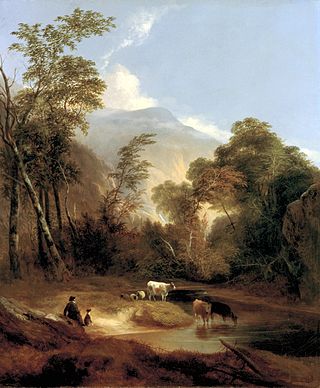
The pastoral genre of literature, art, or music depicts an idealised form of the shepherd's lifestyle – herding livestock around open areas of land according to the seasons and the changing availability of water and pasture. The target audience is typically an urban one. A pastoral is a work of this genre. A piece of music in the genre is usually referred to as a pastorale.
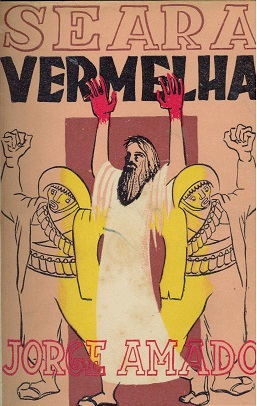
Red Field is a Brazilian Modernist novel. It was written by Jorge Amado. It has not been published in English.

A Bend in the River is a 1979 novel by Nobel laureate V. S. Naipaul.
Orlando: A Biography is a novel by Virginia Woolf, first published on 11 October 1928. Inspired by the tumultuous family history of the aristocratic poet and novelist Vita Sackville-West, Woolf's lover and close friend, it is arguably one of her most popular novels; Orlando is a history of English literature in satiric form. The book describes the adventures of a poet who changes sex from man to woman and lives for centuries, meeting the key figures of English literary history. Considered a feminist classic, the book has been written about extensively by scholars of women's writing and gender and transgender studies.
Southern Ontario Gothic is a subgenre of the Gothic novel genre and a feature of Canadian literature that comes from Southern Ontario. This region includes Toronto, Southern Ontario's major industrial cities, and the surrounding countryside. While the genre may also feature other areas of Ontario, Canada, and the world as narrative locales, this region provides the core settings.

Nausea is a philosophical novel by the existentialist philosopher Jean-Paul Sartre, published in 1938. It is Sartre's first novel.
John Raymond Knister was a Canadian poet, novelist, story writer, columnist, and reviewer, "known primarily for his realistic narratives set in rural Canada ... Knister was a highly respected member of the Canadian literary community during the 1920s and early 1930s, and recent criticism has acknowledged him as a pioneer in establishing a distinctively modern voice in Canadian literature."
Marius the Epicurean: his sensations and ideas is a historical and philosophical novel by Walter Pater, written between 1881 and 1884, published in 1885 and set in 161–177 AD, in the Rome of the Antonines. It explores the intellectual development of its protagonist, a young Roman of integrity, in his pursuit of a congenial religion or philosophy at a time of change and uncertainty that Pater likened to his own era. The narration is third-person, slanted from Marius's point of view, added to which are various interpolated discourses, ranging from adaptations of classical and early Christian writings to Marius’s diary and authorial comment.
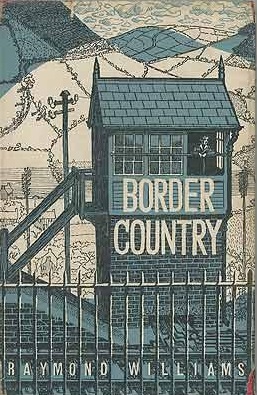
Border Country is a novel by Raymond Williams. The book was re-published in December 2005 as one of the first group of titles in the Library of Wales series, having been out of print for several years. Written in English, the novel was first published in 1960.
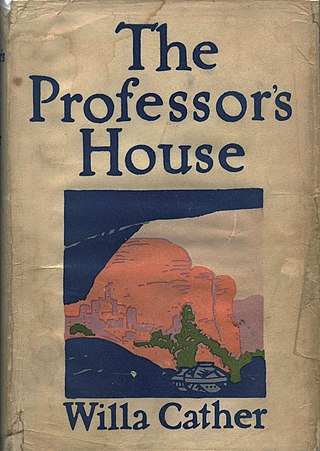
The Professor's House is a novel by American novelist Willa Cather. Published in 1925, the novel was written over the course of several years. Cather first wrote the centerpiece, “Tom Outland's Story,” and then later wrote the two framing chapters “The Family” and “The Professor.”
Art as Experience (1934) is John Dewey's major writing on aesthetics, originally delivered as the first William James Lecture at Harvard (1932). Dewey's aesthetics have been found useful in a number of disciplines, including new media.
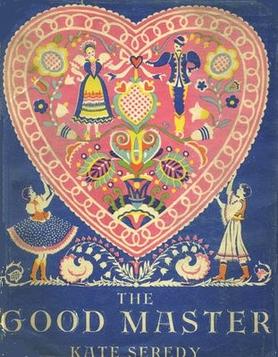
The Good Master (1935) is a children's novel written and illustrated by Kate Seredy. It was named a Newbery Honor book in 1936. The Good Master is set in the Hungarian countryside before World War I and tells the story of wild young Kate, who goes to live with her Uncle's family when her father can't control her and at the end she goes back to her father. At Uncle Marton's suggestion, Kate and her father move back to the country to live, to be near Marton and his wife and son. Like his brother Marton, Kate's father Sandor is a countryman and misses rural life. And he sees what a wonderful effect country life has had on Kate.

The Age of Revolution: Europe: 1789–1848 is a book by Eric Hobsbawm, first published in 1962. It is the first in a trilogy of books about "the long 19th century", followed by The Age of Capital: 1848–1875, and The Age of Empire: 1875–1914. A fourth book, The Age of Extremes: The Short Twentieth Century, 1914–1991, acts as a sequel to the trilogy.

The sociology of literature is a subfield of the sociology of culture. It studies the social production of literature and its social implications. A notable example is Pierre Bourdieu's 1992 Les Règles de L'Art: Genèse et Structure du Champ Littéraire, translated by Susan Emanuel as Rules of Art: Genesis and Structure of the Literary Field (1996).

Culture is an umbrella term which encompasses the social behavior, institutions, and norms found in human societies, as well as the knowledge, beliefs, arts, laws, customs, capabilities, and habits of the individuals in these groups. Culture is often originated from or attributed to a specific region or location.
Gerald Warner Brace was an American novelist, writer, educator, sailor and boat builder. His work frequently employed settings from rural life in New England.

Philosophy of culture is a branch of philosophy that examines the essence and meaning of culture.
Reena Spaulings is a collective project in the medium of a novel, artist persona, and institutional art gallery active from 2005 to present in New York City. The Gallery's Co-founders and Co-Directors include Carissa Rodriguez, John Kelsey and Emily Sundblad. The Reena Spaulings novel and persona remains an anonymous collective organization. The Spaulings initiative speaks to ideas of collectivity, anonymity, and artistic categorization through literature and artistic production. Reena Spaulings is a branch of the Bernadette Corporation, also based in New York City.

Romanticism was an artistic, literary, and intellectual movement that originated in Europe toward the end of the 18th century. Scholars regard the publishing of William Wordsworth's and Samuel Coleridge's Lyrical Ballads in 1798 as probably the beginning of the movement, and the crowning of Queen Victoria in 1837 as its end. Romanticism arrived in other parts of the English-speaking world later; in the United States, it arrived around 1820.

The City and the Mountains is a satirical novel comparing the emptiness of upper-class life in Paris with the pleasures found in rural Portugal. It was written in 1895 by José Maria de Eça de Queirós (1845–1900), also known as Eça de Queiroz, when he was living in Paris. The novel was published posthumously in Portuguese in 1901 with a final edit and an ending contributed by his friend, Ramalho Ortigão. The first English version, translated by Roy Campbell, was published by the Ohio University Press in 1967. A new translation by Margaret Jull Costa was published by Dedalus Books in 2008, and republished in 2018.












